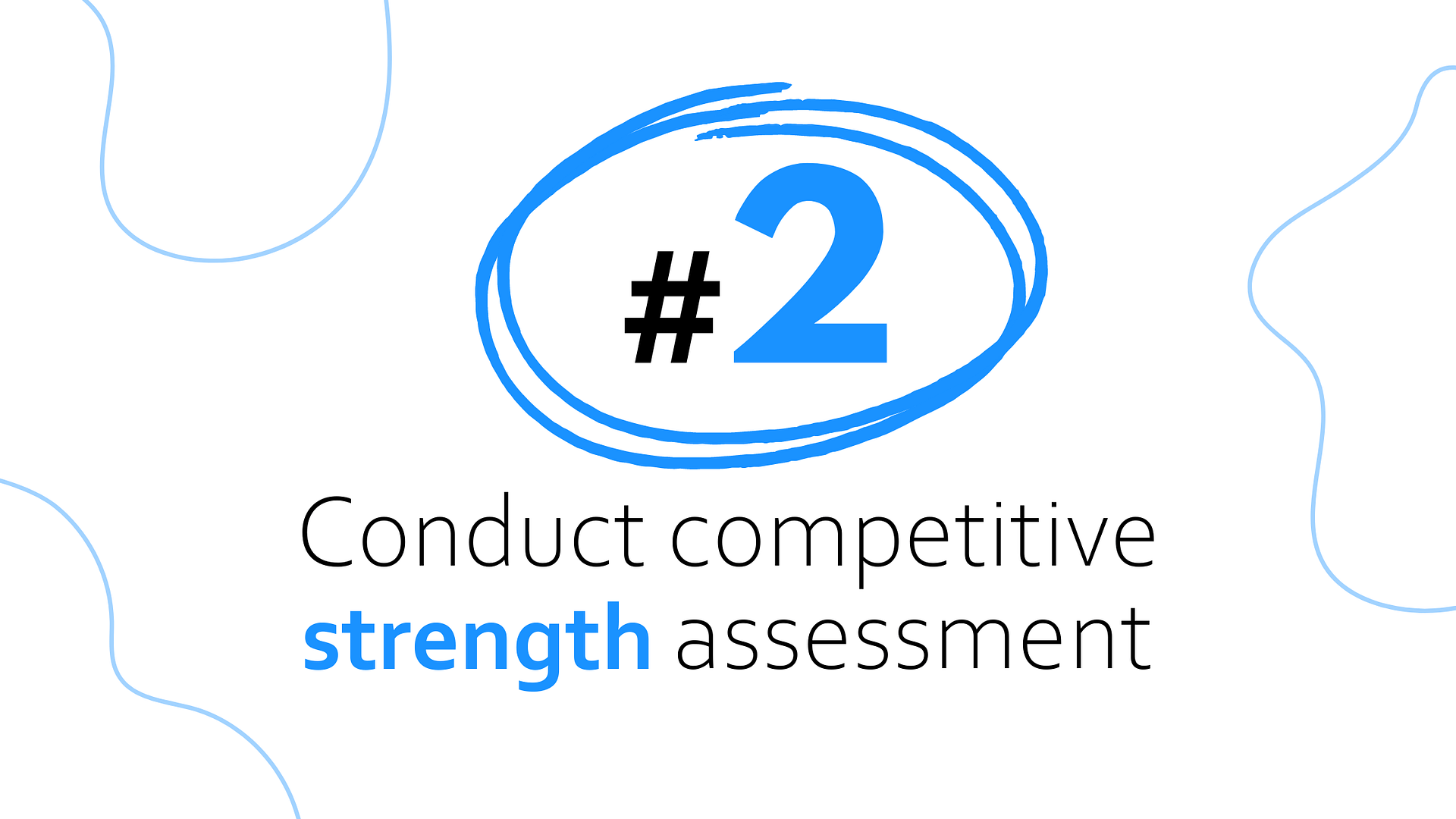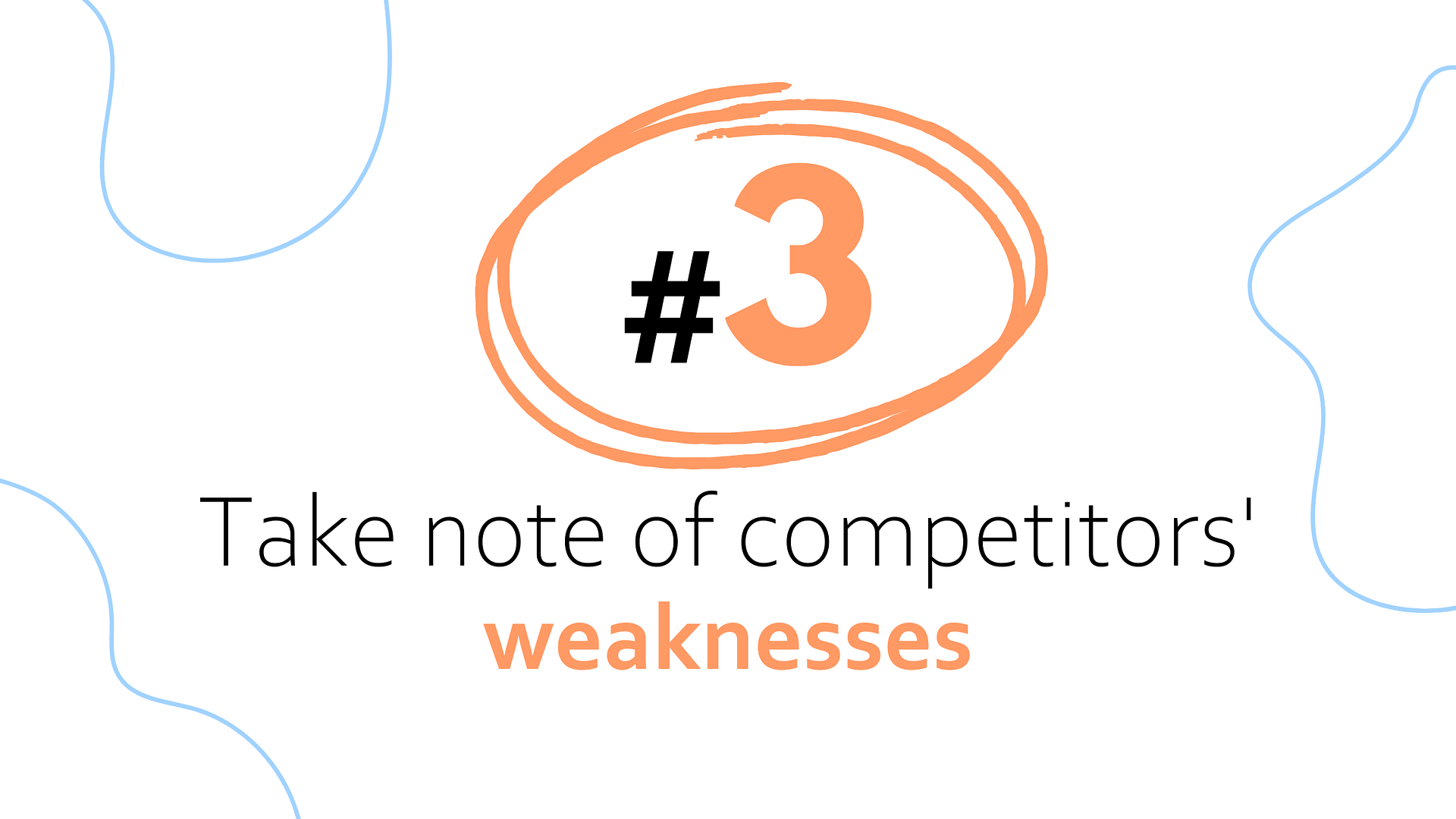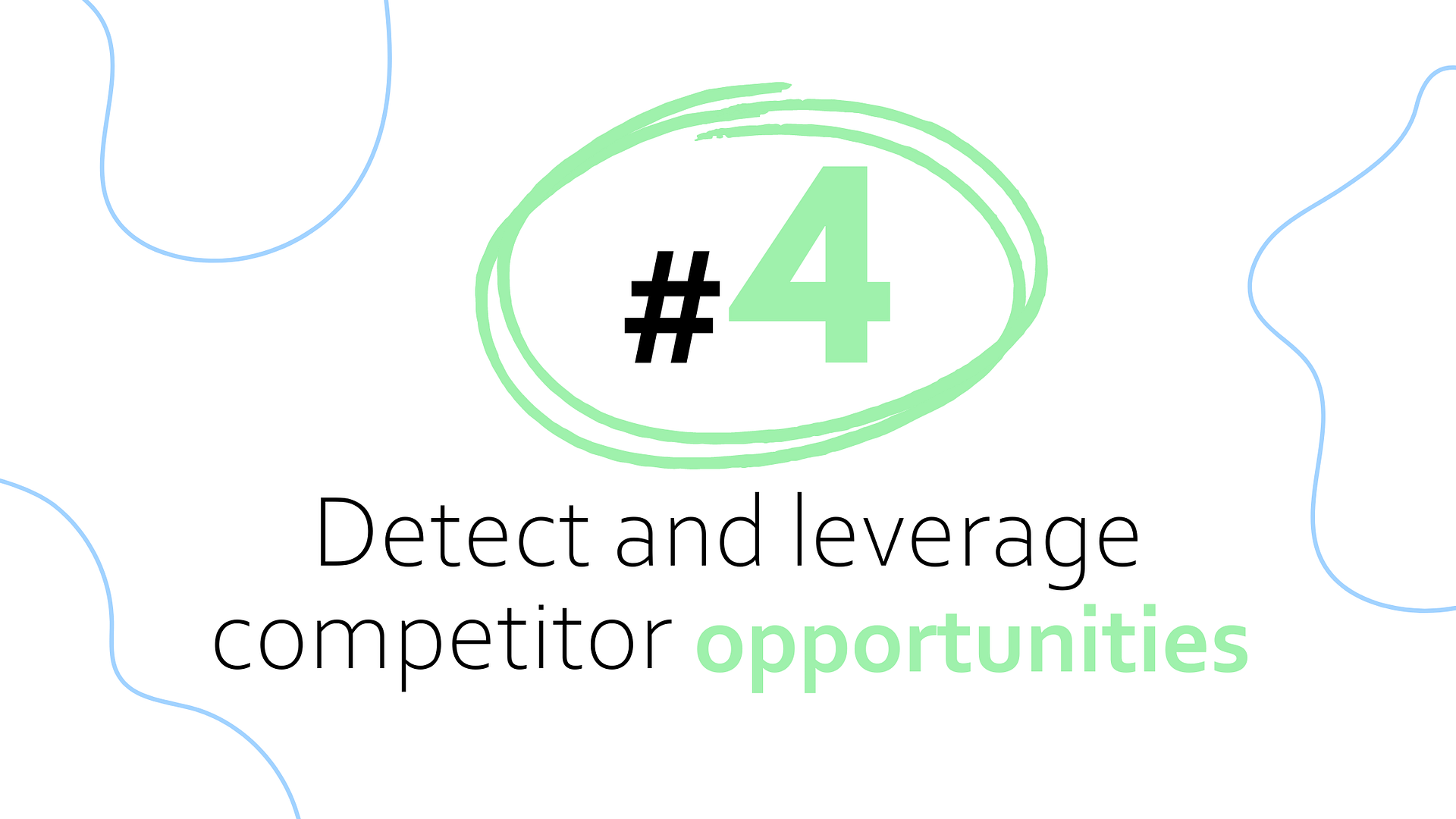Share This :

Angel Poghosyan
January 10, 2023
If you’ve been in the business world for a while, you already know that research is the first step in virtually everything. A competitor SWOT analysis helps you assess the strengths, weaknesses, opportunities, and threats of your business, preparing you for any challenges or chances that come your way.
Tackling your market is no easy task, especially if your competitors are sharks in the industry. In order to compete and get ahead of the game, you’ll need to know your industry inside out. A huge part of this study includes competitor research. But where do you start?
Competitor SWOT analysis is an amazing tool for competitor research. It gives you an almost-360-degree view of all the players in your industry, including your business as well.
How so?
It’s no secret that you and your competitors have similar businesses. If you identify their strengths, weaknesses, opportunities, and threats, you will also know yours. This way, you can cross-reference your knowledge to fight the strengths of competitors and identify your own touch points for success.
If you want to know how and why you need to perform a competitor SWOT analysis, you’ve come to the right place. Let’s dive right in and answer all your burning questions.

The SWOT analysis has been around since the 1960s, and it’s still in practice for a good reason. Ultimately, it provides an audit of your performance and gives direction for future growth. More explicitly, here’s what you get:
Now that you know why it’s important to perform a competitor SWOT analysis, let’s tackle the actual process.

How to do a competitor SWOT analysis? We’ve divided the process into 4 small steps to make your job easier. Simply go over each action, and you’ll be good to go!
Without further ado, let’s jump right in.
Begin with an intriguing topic – the threats of competitors in business. Are there supply chain issues going their way? Are they under threat of losing talent or being outcompeted due to competitive pricing? These are among the many threats that your competitors might be facing.
If your competitors’ products are similar to yours, chances are that your threats might be similar as well.

Threats can be both internal and external. For example, market issues are external factors, but a merger with another company that might lead to a change of leadership is an internal challenge. Some of your competitors’ threats will not affect you, but other external factors can impact your business as well.
Some threats of competitors in business can be used as cheat codes for the future. If the reactions of your rivals are predictable, you’ll have exclusive insights into their next move. This puts the ball in your court and allows you to leverage your knowledge to grab some market share.
Now that you’ve identified your competitors’ threats, let’s move on to their strengths.
Next up, it’ll be time to conduct analysis regarding your competitors’ strengths. What are their biggest advantages? What do they do the best in the industry? Can their strengths pose a threat to you? These are just some of the questions you’ll need to answer when running a competitor SWOT analysis.

If you’re new to the market, you’ll have to deal with some established sharks in the business. You don’t necessarily have to do everything better than them. Instead, you can try to differentiate.
Assessing the strengths of your rivals can also help you identify the things you should focus on. Some customer needs are evident, so you’ll need to cover the basics before you can tackle the beasts of your industry.
Also Read: 10 Benefits of Hiring a Digital Marketing Agency Over an In-House Team
Whether your competitors are bigger or smaller than you, you need to know their weak spots as well. What is something their customers complain about? What are they doing wrong? You’ll need to look at these issues from all angles, including both internal and external processes.
You’ll need to conduct a digital marketing competitor analysis to answer questions like: Do they have good SEO practices in place, and are they active on social media?

Listen in on what their employees say about the company. Are they working in a toxic environment? Do they have an unreasonably high turnover rate?
If you play on your competitors’ weaknesses, you can map out a strategy to beating them at their own game.
Last but not least, you have to gauge the opportunities of your competitors. What do they mean for your business, and why should you care?
In reality, opportunities are more vague than strengths and weaknesses per se. They might come along, and they might not. They also depend on various factors, both internal and external.

Pinpointing opportunities is tough, but if you hit the bullseye, it’ll definitely pay off. Once you know the forces that are coming at your competitor, you’ll be able to proactively stay ahead of the game, predict their next move, and ultimately outcompete your rivals.
You may also look at this point from the angle of opportunities for you. Has your competitor made a move that you can capitalize on? Read the market, and it will pave the way for you.
We’ve finally reached the end of our step-by-step competitor SWOT analysis tutorial. With just 4 simple steps, you can gauge the competition in your industry and leverage your insights to leap forward.
As an amazing research tool, the competitor SWOT analysis can help you outcompete your rivals.
In this blog, we’ve taught you why and how to do a SWOT analysis on a competitor. So, get to identifying the strengths, weaknesses, opportunities, and threats of competitors to help polish your market takeover strategy!

6+ years of doing content, marketing, and strategy for startups & businesses. Specializing in social media, entertainment, and tech.
Thank you for exploring our knowledge base. If you’re interested in applying expert techniques and strategies to skyrocket your business, let’s talk.
